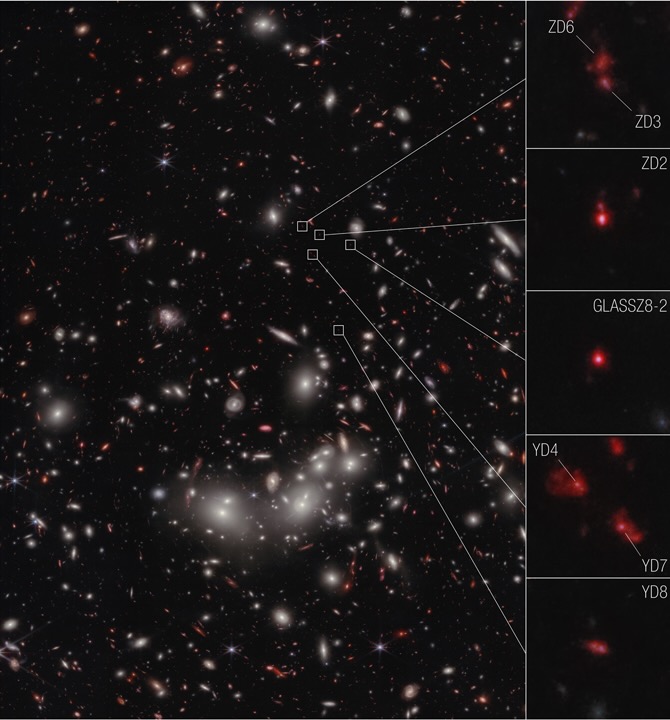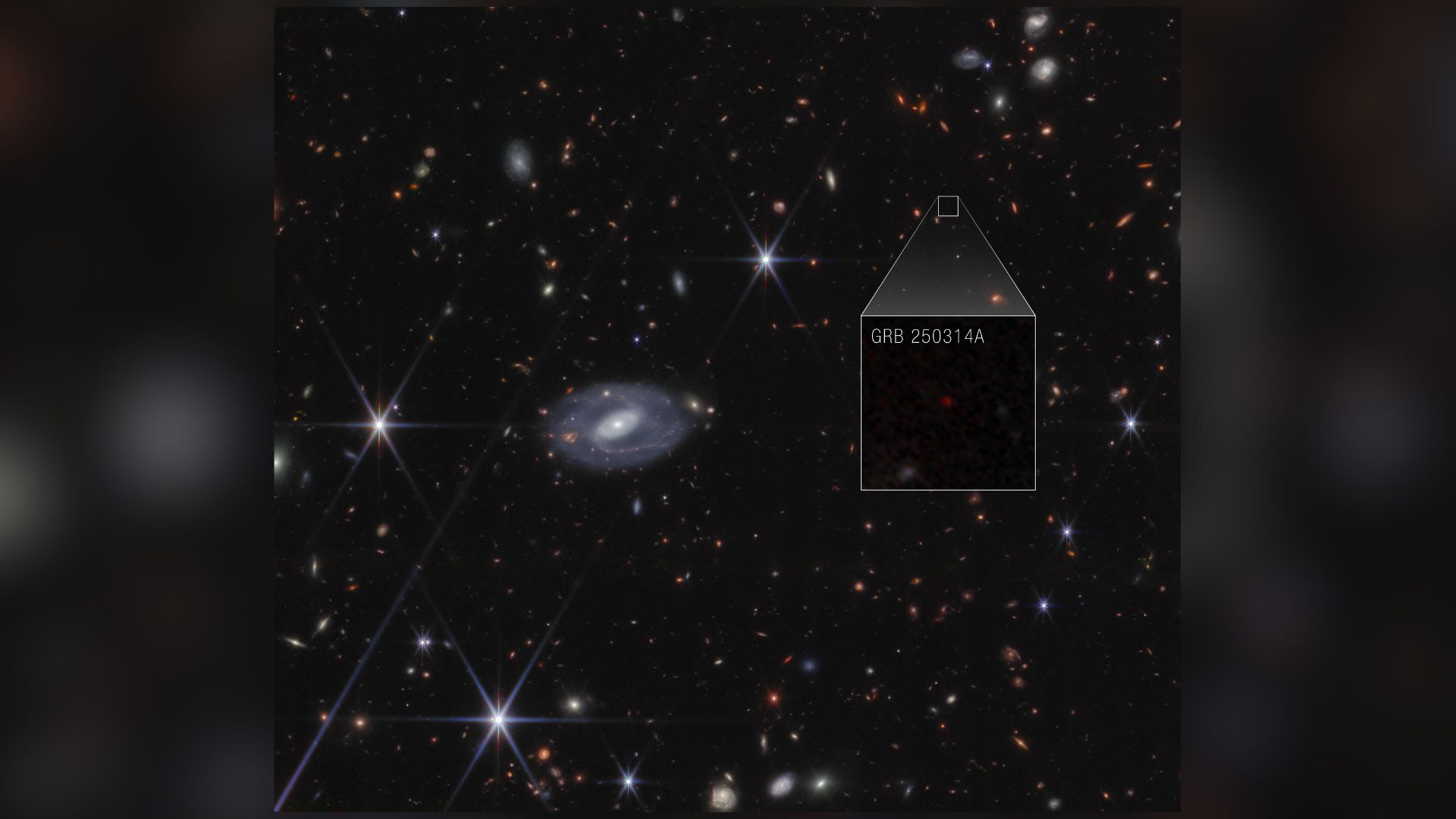James Webb Space Telescope spots huge galactic protocluster in the early universe (photo)
The developing cluster existed just 650 million years after the Big Bang and could help answer fundamental questions about the evolution of the universe.

The James Webb Space Telescope (JWST) has imaged seven galaxies that comprise a massive galactic cluster in the early stages of its evolution.
The galaxies are seen as they were just 650 million years after the Big Bang, meaning they make up the youngest so-called "protocluster" ever seen by astronomers.
The protocluster will eventually grow in mass and size by incorporating galaxies, forming a galactic cluster that resembles the Coma Cluster, which NASA describes as a "monster of the modern universe." The observation of these seven galaxies could therefore help scientists better understand how the cosmos has evolved over its 13.8-billion-year existence to take the form we see in the local universe today.
"This is a very special, unique site of accelerated galaxy evolution, and the JWST gave us the unprecedented ability to measure the velocities of these seven galaxies and confidently confirm that they are bound together in a protocluster," research lead author Takahiro Morishita, a scientist at the Infrared Processing and Analysis Center at the California Institute of Technology in Pasadena, said in a statement.
Related: James Webb Space Telescope images: 12 astonishing views of our universe (gallery)
The team was able to determine that the galaxies are moving at over 2 million mph (3.2 million kph), about 1,000 times faster than a bullet fired by a rifle, through a halo of dark matter. The key to doing this and to determining the distances between the galaxies were precise measurements captured by Webb's Near-Infrared Spectrograph (NIRSpec).
The NIRSpec data allowed the team to model how the galaxy group develops over time and build a picture of what this cluster should look like in the modern universe. They predicted the protocluster will resemble the Coma Cluster, meaning it could now be one of the densest clusters of galaxies in the cosmos with thousands of individual member galaxies.
Breaking space news, the latest updates on rocket launches, skywatching events and more!
"We can see these distant galaxies like small drops of water in different rivers, and we can see that eventually they will all become part of one big, mighty river," team member Benedetta Vulcani, of the National Institute of Astrophysics in Italy, said in the same statement.
Until the December 2021 launch of JWST, astronomers had difficulty investigating how galactic clusters like the Coma Cluster came together in the infant universe. This is a result of the expansion of the universe stretching the wavelengths of light leaving these clusters as they travel for billions of years to reach Earth.
This stretching, or "redshift," causes the light to move down toward the "red end" of the electromagnetic spectrum. The light traveling from the earliest galaxies that existed shortly after the Big Bang and came together to birth the first galactic clusters, has been stretched out into the infrared portion of the spectrum.
As the most powerful space telescope ever invented, the JWST is designed specifically to see the universe in infrared — meaning that astronomers can finally begin to explore the missing pieces of the galactic evolution puzzle.
The seven galaxies studied in this research were selected by the Hubble Space Telescope as part of the Frontier Fields Program for further investigation by JWST. Hubble doesn't see deep into the infrared end of the spectrum, limiting the detail it can glean about these early galaxies. But JWST is well equipped to study light that's strongly redshifted.
And the study of such protoclusters in the early universe could get a massive boost when JWST teams up with another powerful telescope in the future.
NASA's forthcoming Nancy Grace Roman Space Telescope is a wide-field survey mission that will also observe the cosmos in high-resolution infrared. Able to capture a field of view 200 times greater than that of Hubble in a single shot, Roman, set to launch in 2027, should be able to spot many more protocluster candidates for JWST to follow up on for deeper investigation.
"It is amazing the science we can now dream of doing, now that we have the JWST," study team member Tommaso Treu, of the University of California, Los Angeles, said in the same statement. "With this small protocluster of seven galaxies, at this great distance, we had a 100% spectroscopic confirmation rate, demonstrating the future potential for mapping dark matter and filling in the timeline of the universe's early development."
The team's research was published this week in the Astrophysical Journal Letters.
Follow us on Twitter @Spacedotcom or on Facebook.

Robert Lea is a science journalist in the U.K. whose articles have been published in Physics World, New Scientist, Astronomy Magazine, All About Space, Newsweek and ZME Science. He also writes about science communication for Elsevier and the European Journal of Physics. Rob holds a bachelor of science degree in physics and astronomy from the U.K.’s Open University. Follow him on Twitter @sciencef1rst.

